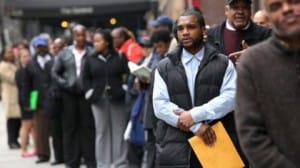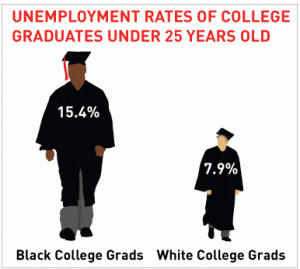A study of the manpower implications of small business financing
by Joseph Debro
A 1968 book-length report, titled “A Study of the Manpower Implications of Small Business Financing: A Survey of 149 Minority and 202 Anglo-Owned Small Businesses in Oakland, California,” was sent to the Bay View by its author, Joseph Debro, prior to his death in November 2013, and his family has kindly permitted the Bay View to publish it. The survey it’s based on was conducted by the Oakland Small Business Development Center, which Debro headed, “in cooperation with the small businessmen of Oakland, supported in part by a grant, No. 91-05-67-29, from the U.S. Department of Labor, Manpower Administration, Office of Manpower, Policy, Evaluation and Research.” Project co-directors were Jack Brown and Joseph Debro, and survey coordinator was Agustin Jimenez. The Bay View is publishing the report as a series. A prolog appeared in the December 2013 Bay View, Part 1 in January 2014, Part 2 in February, Part 3 in April, Part 4 in May, Part 5 in June, Part 6 in August, Part 7 in October, and this is Part 8 of the report.
Negroes in the labor force
Persons who are employed or unemployed but able to work and actively seeking a job are considered to be part of the labor force, whereas persons who are neither employed nor unemployed, such as retired persons, children, non-working students and full time housewives, as well as “unemployables,” are not considered as part of the labor force.

Hill registered a note of alarm when he noted that between 1954 and 1964, the number of able-bodied Negro males between the ages of 20 and 64 who were outside the labor force increased from 270,000 to 405,000 (1967:21). He assumes that this increase is due to a pathological alienation of Negroes from the working world. After drawing the comparison between white and Negro participation rates, he assigns the increase to “differential hidden unemployment.” Both white and Black male participation in the labor force (when expressed as a percentage of the total labor force) has been declining rather steadily, but the decline among Negro males has been more steep than among whites in most age categories.
On the other hand, females, but more white than Negro, have been increasing their participation in the labor force. The reason for the relative advances in recent years of white males and females in participation in the labor force is not that more and more Black teenagers are finding their way into college, where they are temporarily removed from the labor force; they are discouraged with the entire nexus of the Negro’s involvement in a white man’s world.
Negro youth of both sexes who are outside the labor force perceive themselves as victims of racial discrimination. As a result of the accompanying despair, a deep pessimism overtakes them – a pessimism so powerful that they do not wish to enter in competition with white young adults, who have received better training and preferential treatment by prospective white employers.
This tragic employment picture is compounded upon further analysis of data concerning full- and part-time unemployment. The rate of Negro males employed less than 35 hours per week between 1956 and 1961 never fell below 18 percent, whereas for whites it averaged about 13 percent; these data indicate a greater dependence upon part-time work (frequently of an unsteady and inherently precarious nature) by Negroes. In addition, Blacks were more often involuntarily unemployed due to layoffs or reductions in hours.
Since 1955, Blacks have had a full time unemployment rate over twice that of whites. Automation has adversely affected many jobs in which Negroes were employed, since, because of lower educational attainments, they were assigned to jobs which could eventually be handled solely by machinery. Automation, coupled with poor educational attainment, higher induction rate into the armed services, and mounting discrimination from white-controlled unions and businesses have together conspired to prevent meaningful participation of Negro youth in the labor force. Untrained and unskilled, these youth are in no position to acquire either the jobs or education demanded in an expanding economy.
Negro youth of both sexes who are outside the labor force perceive themselves as victims of racial discrimination. As a result of the accompanying despair, a deep pessimism overtakes them.
The discouragement and despair which have become even more widespread as the gap yawns ever larger between the Negro lower class and the white middle class will prevent this generation of colored youth from attaining the modest levels of achievement reached in previous epochs unless drastic reforms are introduced.
While the Black labor situation in the 20th century has been agonizing, very little account has been taken of the Negro as entrepreneur. Authors like Greene and Woodson (1930), Johnson (1943), Pierce (1947) and the National Negro Business League have given countless examples of moderately successful Black businessmen, but they have not recognized the lack of a genuine free development of entrepreneurship among colored people in the United States.
Frazier (1962) and Foley (1966) have examined at length the problem of the relative absence of Negroes as American capitalists in the white man’s sense of the word. Both of these authors point out that lack of formal education, the presence of strong competition from more favored white native-born and immigrant groups, political pressure emanating from white businessmen in city halls, segregation of the Negro population into separate urban wards and Negro dependence upon a poverty-stricken racial market were the principal factors responsible for the absence of a business tradition.

Of the total number of managers, officials and proprietors in this country, Negroes were only 2 percent in 1955, 2.5 percent in 1965. Thus the Black entrepreneur is an insignificant part of both the Black work force and the particular occupational category itself.
With knowledge that a comfortable living cannot be made in the traditional lines of Negro business, no role models can be established for young persons ready to enter into the labor market. On the side of organized labor, there are few prospects for success either. It is no wonder that Negro youths are disenchanted with the entire employment scene in the United States and are so prone to vent their frustration in violence.
Joseph Debro, born Nov. 27, 1928, in Jackson, Miss., and a pillar of Oakland until his death on Nov. 5, 2013, was president of Bay Area Black Builders and of Transbay Builders, a general engineering contractor, former director of the Oakland Small Business Development Center and the California Office of Small Business, co-founder of the National Association of Minority Contractors and a bio-chemical engineer.





